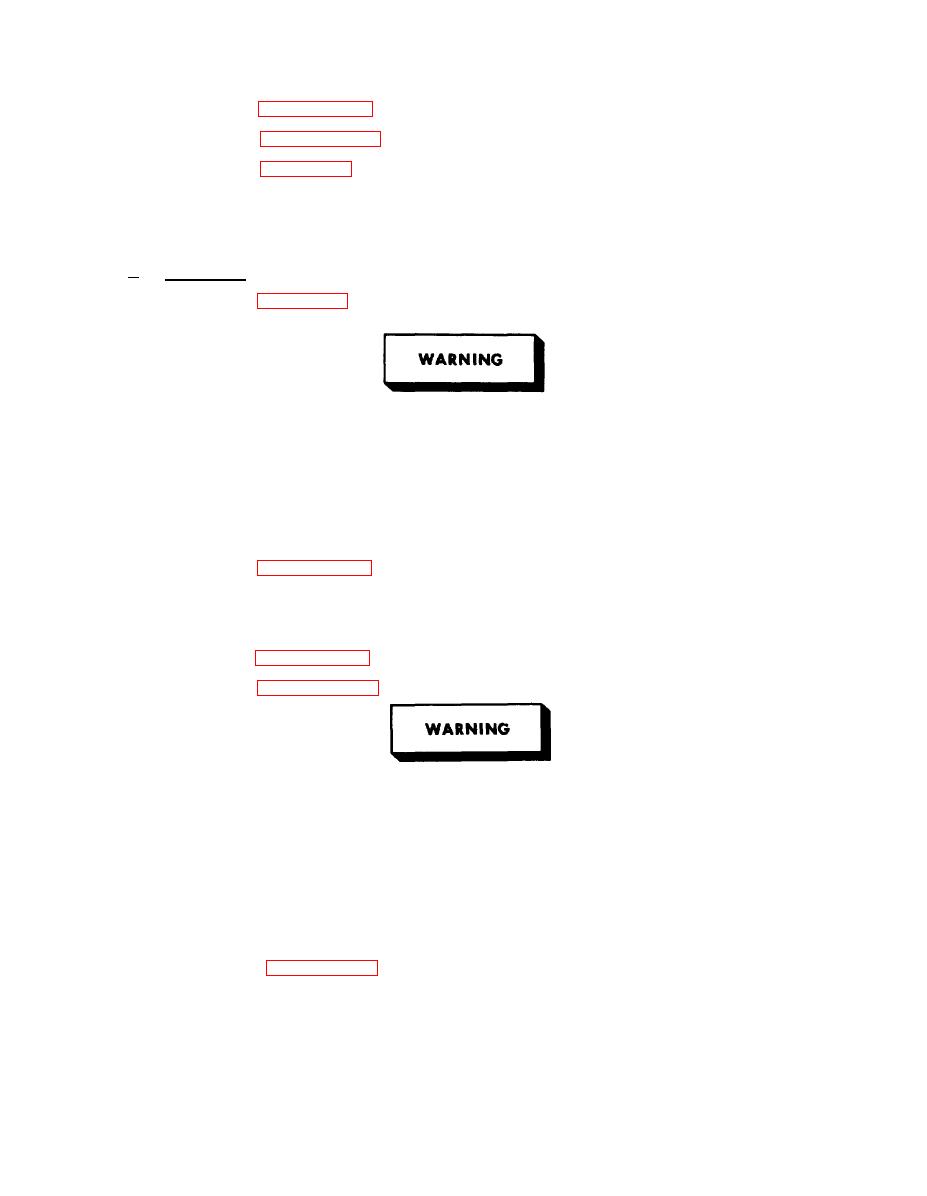 |
|||
|
|
|||
|
Page Title:
QUENCH THERMAL EXPANSION VALVE - Continued. |
|
||
| ||||||||||
|
|
 TM 5-4120-369-14
QUENCH THERMAL EXPANSION VALVE - Continued.
5-26.
(1) Refer to paragraph 6-3 and discharge the refrigerant system.
(2) Refer to paragraph 4-18 and remove the top rear cover.
(3) Refer to figure 5-10. Soften the mastic in the bulb well and remove the expansion
valve bulb. Take care to avoid damaging the capillary tube.
(4) Remove the expansion valve clamp.
(5) Unsolder the expansion valve clamp.
Installation.
c.
(1) Refer to figure 5-10 and mount the expansion valve against the compartment
wall using the mounting clamp.
Brazing operations should be carried out using approved
eye protection equipment and rods not containing cadmium.
Certain brazing operations may require mechanical ventilation.
Local preventive medicine personnel should be queried
if doubt exists as to rod composition or ventilation
requirements.
(2)
Solder the expansion valve to the refrigerant system tubing.
(3)
Refer to paragraph 6-3 and leak test the refrigerant system.
(4) Insert approximately one ounce of thermal mastic in bulb well. Insert sensing
bulb of expansion valve and move bulb back and forth to distribute mastic. Position bulb
approximately one inch beyond open end of bulb well.
(5)
Refer to paragraph 6-3 and purge the refrigeration system.
(6)
Refer to paragraph 4-18 and install top rear cover.
Caution should be exercised with fluorocarbon refrigerant
gas (freons) as they can displace oxygen and thereby cause
suffocation.
Personnel with a history or other evidence of cardiac rhythm
abnormalities should be made aware of the potential for
aggravation of existing cardiac rhythm abnormalities or the
induction of arrhythmias, as a result of exposure to
fluorocarbon refrigerant gases (freons). Such individuals
should be evaluated by local medical authorities before
working in environments where potential freon exposure
may occur.
(7)
Refer to paragraph 6-3 and charge refrigerant system.
5-28
|
|
Privacy Statement - Press Release - Copyright Information. - Contact Us |